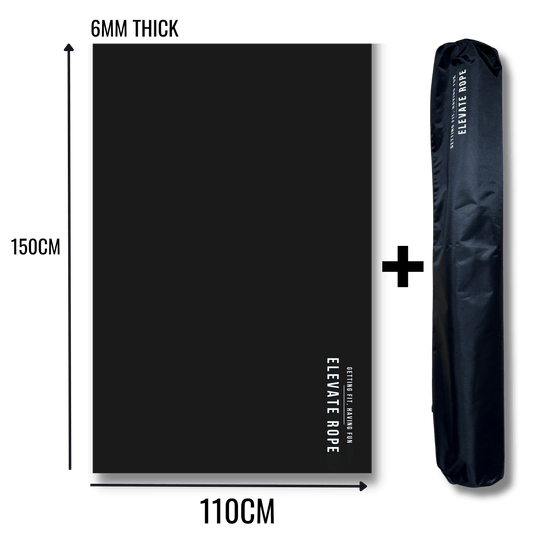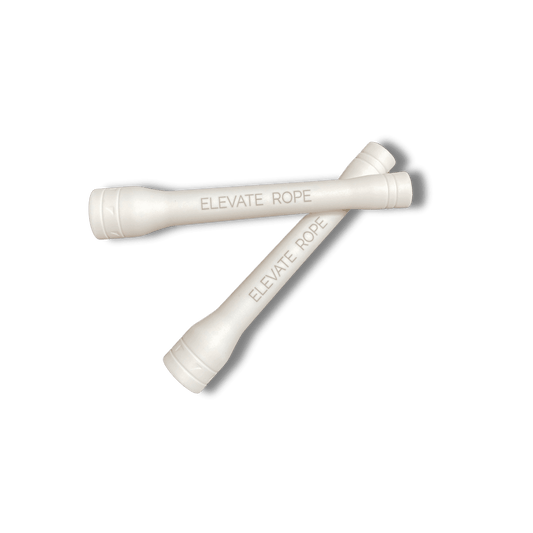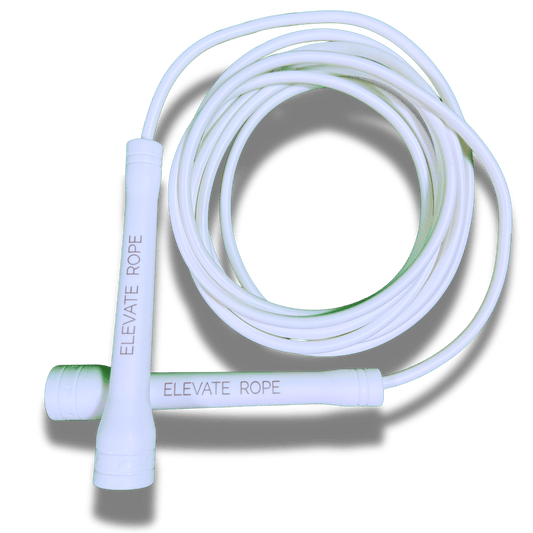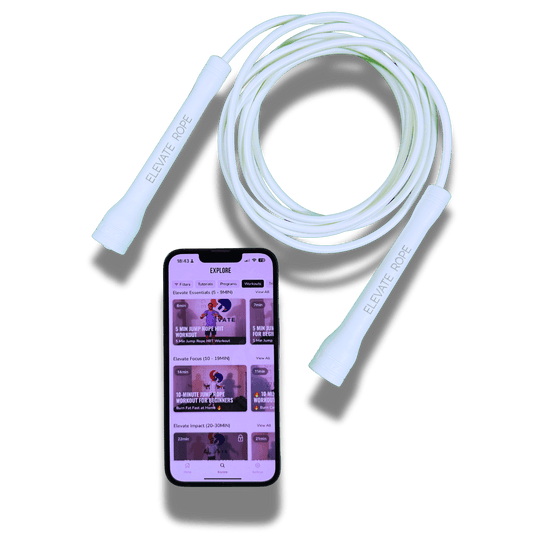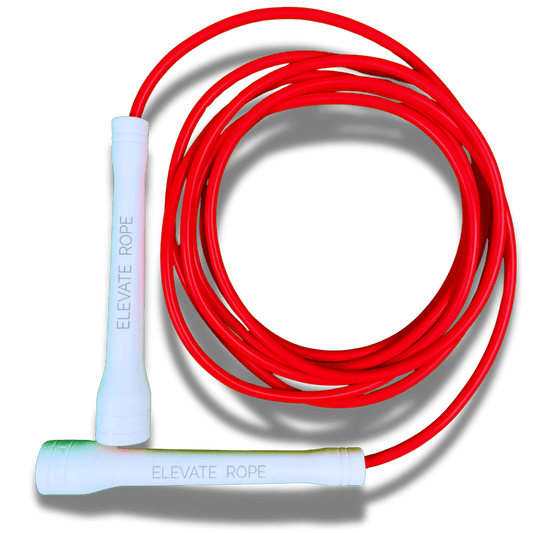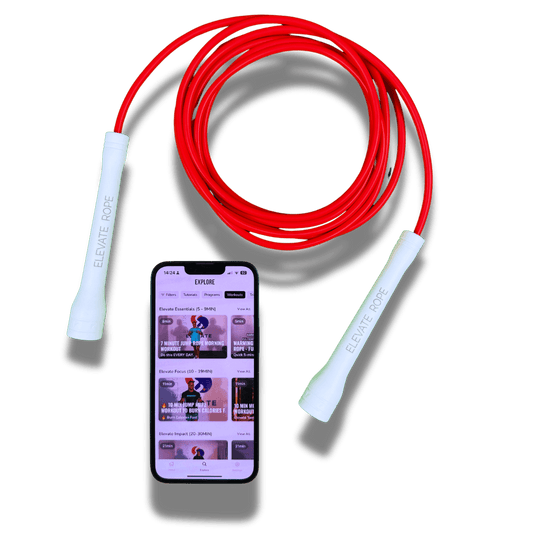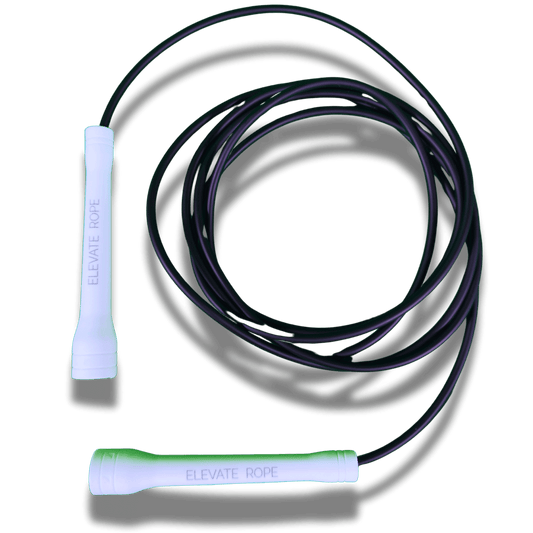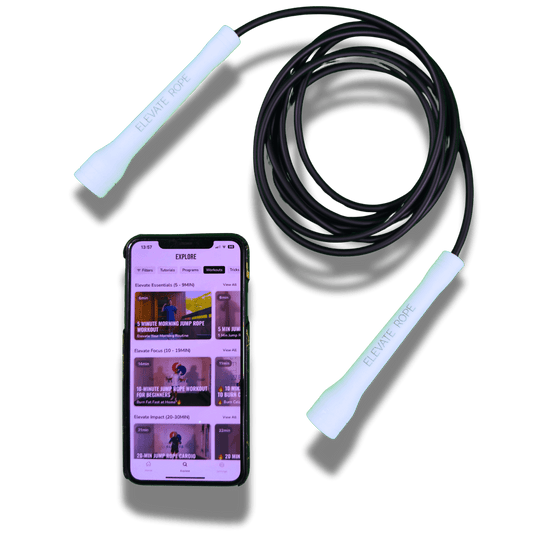Introduction : Pourquoi le foam rolling est l'arme secrète du sauteur à la corde

La corde à sauter est un outil puissant pour le cardio, la coordination et la condition physique — mais sa nature répétitive et à fort impact peut laisser les muscles tendus et douloureux, surtout au niveau des mollets, quadriceps, ischio-jambiers et épaules. Sans récupération adéquate, la raideur s'accumule, la performance diminue et le risque de blessure augmente. C'est là qu'une routine de foam rolling entre en jeu.
Le foam rolling — aussi appelé auto-libération myofasciale — aide à libérer les nœuds musculaires, améliorer la circulation et restaurer l'amplitude de mouvement. Bien fait, c'est comme s'offrir un massage des tissus profonds après chaque séance d'entraînement.
Dans ce guide, vous apprendrez :
- Pourquoi le foam rolling fonctionne pour les athlètes de corde à sauter
- Les muscles exacts à cibler pour une récupération plus rapide
- Techniques de roulement étape par étape
- Comment intégrer le foam rolling dans votre échauffement et récupération
Avantages du foam rolling pour les athlètes de corde à sauter
- Réduit les courbatures musculaires (DOMS) — Aide à éliminer les déchets après l'entraînement.
- Améliore la flexibilité & la mobilité — Restaure l'amplitude de mouvement pour une technique de saut plus propre.
- Accélère la récupération — Augmente le flux sanguin et l'apport en nutriments aux muscles.
- Prévient les blessures dues au surmenage — Maintient les tissus sains et élastiques.
- Améliore l'échauffement — Active les muscles avant les sauts à haute intensité.
💡 Astuce de pro : La routine de foam rolling est plus efficace lorsqu'elle est combinée à une bonne hydratation, des étirements et une récupération active.
Outils essentiels pour le foam rolling
- Rouleau en mousse standard — Polyvalent, bon pour les quadriceps, ischio-jambiers et mollets.
- Textured Roller — Offre un massage des tissus profonds pour les nœuds tenaces.
- Balle de massage / Balle de lacrosse — Parfaite pour les mollets, les fessiers et les épaules.
- Mini Roller — Idéal pour les poignets et les avant-bras si vous faites des figures avancées à la corde.
Routine étape par étape de foam rolling pour la récupération à la corde à sauter

Faites cette routine après l'entraînement ou les jours de récupération. Passez 30 à 60 secondes par zone, en bougeant lentement et en faisant une pause sur les points sensibles.
1. Mollets
- Asseyez-vous jambes tendues, roller sous les mollets.
- Soulevez légèrement les hanches, roulez des chevilles jusqu'en dessous des genoux.
- Faites une pause sur les zones tendues et fléchissez/pointez les orteils pour un relâchement supplémentaire.
2. Ischio-jambiers
- Asseyez-vous avec le roller sous les cuisses, les mains en soutien derrière vous.
- Roulez d'au-dessus des genoux jusqu'en dessous des fessiers.
- Pour une pression plus profonde, croisez une jambe sur l'autre.
3. Quadriceps
- Allongez-vous face contre terre avec le roller sous les cuisses.
- Roulez des hanches jusqu'au-dessus des genoux.
- Essayez de plier le genou en roulant pour cibler les tissus plus profonds.
4. Fessiers & Hanches
- Asseyez-vous sur le roller, croisez une cheville sur le genou opposé.
- Penchez-vous du côté sur lequel vous roulez.
- Faites de petits cercles sur les muscles fessiers.
5. Bas du dos (optionnel)
- Asseyez-vous par terre, placez le rouleau derrière le bas du dos.
- Penchez-vous légèrement en arrière et roulez sur une courte distance de haut en bas.
- Évitez de rouler directement sur la colonne vertébrale.
6. Haut du dos & épaules
- Allongez-vous avec le rouleau sous le haut du dos.
- Roulez du milieu du dos jusqu'à juste en dessous du cou.
- Étendez les bras au-dessus de la tête ou enlacez-vous pour écarter les omoplates.
Comment combiner le Foam Rolling avec la récupération après la corde à sauter

Routine post-entraînement :
- Routine de Foam Rolling — 5–8 min
- Étirements statiques — Mollets, quadriceps, ischio-jambiers
- Hydratation & nutrition légère — Protéines + électrolytes
- Travail léger de mobilité — Les jours sans saut à la corde
Suggestion de planning hebdomadaire :
- Roulez 3–4x par semaine pour l'entretien
- Roulez après chaque séance intense de corde à sauter pendant les cycles d'entraînement intensifs
Erreurs courantes avec le Foam Rolling
- Rouler trop vite — Les muscles ont besoin de temps sous pression pour se détendre.
- Overdoing it — Un roulement excessif peut provoquer des irritations.
- Skipping warm-up rolling — Le roulement avant la séance doit être plus léger et plus rapide.
- Holding breath — Respirez profondément pour aider les muscles à se détendre.
Progressions avancées de foam rolling pour les sauteurs
- Contract-Relax Method — Pressez le muscle contre le rouleau, contractez pendant 5 secondes, puis relâchez.
- Pin & Stretch — Roulez jusqu'à un point de tension, maintenez, puis mobilisez l'articulation dans son amplitude de mouvement.
- Rope Integration Drill — Après avoir roulé les mollets, faites 30 secondes de saut léger pour améliorer la circulation sanguine.
Recommandations d'équipement pour la récupération à la corde à sauter
- Elevate Performance Mat — À associer au foam rolling pour une surface amortie.
- Textured Trigger Point Roller — Idéal pour la libération musculaire profonde.
- Double Massage Ball — Parfait pour les érecteurs du rachis et les mollets.
Conclusion
Une routine régulière de foam rolling pour la récupération après la corde à sauter garde vos muscles détendus, vos sauts fluides et votre risque de blessure faible. En combinant un roulement ciblé avec des habitudes d'entraînement intelligentes, vous récupérerez plus vite, sauterez mieux et resterez plus longtemps dans le jeu.
Ne vous contentez pas de vous entraîner dur — récupérez intelligemment.
